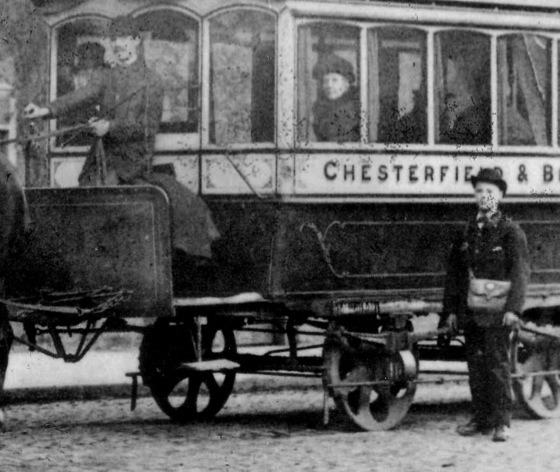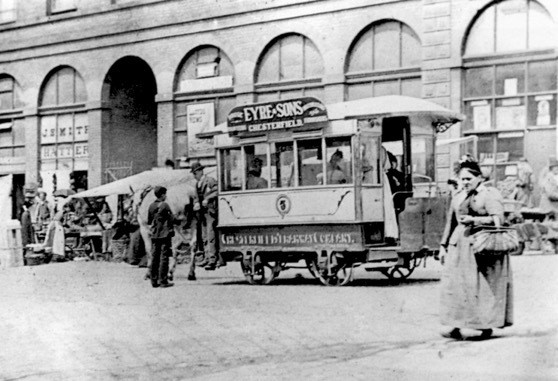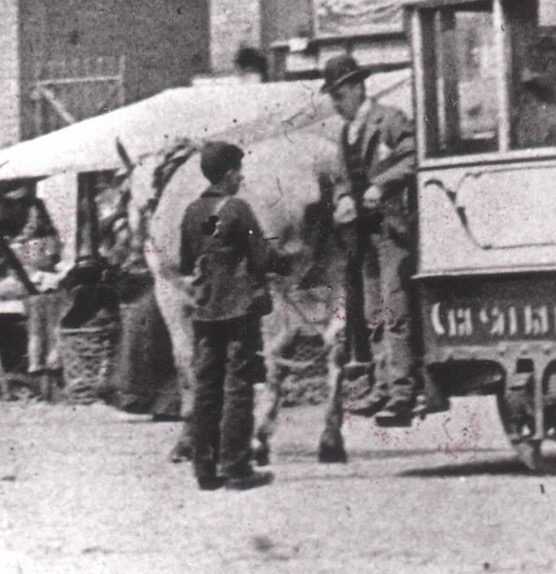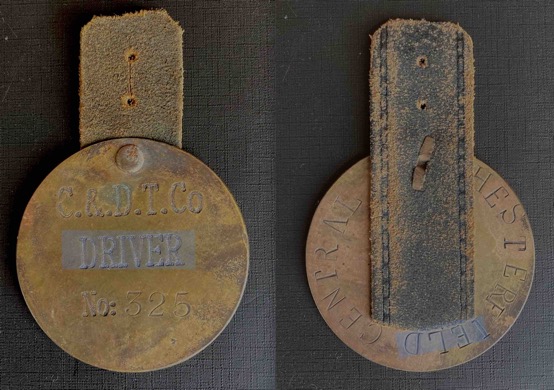Chesterfield Tramways
History
Chesterfield's standard-gauge, horse-drawn tramway, which was owned and operated by the Chesterfield and District Tramways Company, commenced services on the 8th November 1882.
The tramway struggled from its inception, the promoters obtaining powers in 1879, but subsequently failing to get the scheme off the ground, such that an extension to the time allowed for completion had to be sought, which when granted, led to the formation of the C&DTCo in December 1881. Although the company was authorised to build approximately 4.5 miles of tramway, barely a quarter of this was ever constructed, which suggests that the company was under-capitalised, and perhaps hoped to open the initial line then finance the remainder from the profits. If so, it was to be sadly disappointed, as takings were far below expectations — not helped by a sporadic and unreliable service — the company eventually entering voluntary liquidation in February 1885 with debts of £500.
Rescue came in the form of a new and locally dominated company — the Chesterfield Tramways Company — which was registered on the 6th December 1886 for the express purpose of taking over the old company. For its money, the new company got a handful of vehicles and horses, and 1.25 miles of tramway running from a terminus at Low Pavement on the Market Place, westwards along West Bars, then southwestwards along Chatsworth Rd to the western terminus at Brampton, just short of Walton Lane.
Despite the new company's good intentions, coupled with a not unreasonable expectation that the tramway could be made to pay if a reliable service were provided, it continued to struggle financially, though apparently not to the extent that debts were incurred. A couple of new tramcars were acquired in 1890, but otherwise, it appears to have been run on a shoestring.
Luckily for the CTCo, the corporation developed an interest in acquiring the tramway, and on the 3rd June 1897, decided to approach the company to see whether they would be prepared to sell. As the corporation did not have the right to compulsorily purchase the undertaking for another three years (under the 21-year rule of the Tramways Act of 1870), this would ordinarily have led to some hard negotiation; however, as a deal was quickly reached, it seems likely that both parties were well-disposed towards one another, no doubt helped by the major shareholders being local men.
The corporation took possession of the tramway on the 22nd November 1897, and immediately set about putting the enterprise on a firmer footing. Newer cars were acquired and ticket prices halved, with the result that the tramway prospered, probably for the first time in its existence.
The corporation continued to operate the horse trams for seven years, the last service of all running on the 19th December 1904, electric services starting the following day.
Uniforms
Photographs depicting drivers and conductors taken prior to the municipal take-over of 1897 are relatively rare, and of those that do survive, it is likely that all were taken when the tramway was being worked by the Chesterfield Tramways Company (1886 to 1897). These clearly show that crews wore informal but smart attire, comprising: jackets, shirts, ties and the fashionable headgear of the day, usually the bowler hat. No insignia of any kind appears to have been worn, including municipal licence badges.
Photographs of inspectors have not survived, and it may well be that the owning companies never employed them.
Further reading
For further information on Chesterfield's tramways, see: 'A Chesterfield Tramscape' by B Marsden (Ryestone Publications; 2011); and 'Tracks and Trackless — Chesterfield's Trams and Trolleybuses' by B Marsden (Amberley Publishing; 2012).
Images
Horse tram drivers and conductors
A driver and a very youthful conductor stand with an unidentified horsecar at West Bars — photo undated, but certainly taken before 1897, and possibly before 1890 given the style of the bowler hats. Photo and background information courtesy of the Barry Marsden Collection.
The driver of Chesterfield Tramways Company Horsecar No 5 converses with his conductor at the Market Place terminus (Low Pavement) — photo undated, but certainly taken between 1890 when No 5 was delivered and 1897. Photo courtesy of the Tramways and Light Railway Society, with thanks to David Voice.
An enlargement of the above photograph showing the conductor and the driver, both clearly wearing informal attire.
A licence badge that at face value, would appear to have been issued by or to, a driver of the Chesterfield and District Tramways Company (1882-1885) — brass. However, the extremely high number ('325') strongly suggests that they were not specific to the tramway, which probably had just a handful of drivers. A second example has recently come to light, again with a high number ('332'), but with 'SPITAL' on the rear, a district of Chesterfield that most certainly wasn't served by the tramway. It may well be that 'C.&D.T.Co' does not refer to the tramway company at all, but to another undertaking. Unfortunately, there is no photographic evidence from the period when the licence badge would ostensibly have been in use that would confirm or refute the use of the badge by tram drivers.